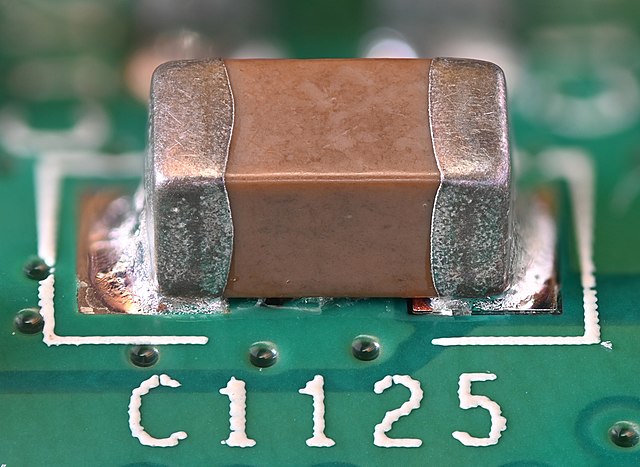Capacitance is the capability of a material object or device to store electric charge. It is measured by the charge in response to a difference in electric potential, expressed as the ratio of those quantities. Commonly recognized are two closely related notions of capacitance: self capacitance and mutual capacitance. An object that can be electrically charged exhibits self capacitance, for which the electric potential is measured between the object and ground. Mutual capacitance is measured between two components, and is particularly important in the operation of the capacitor, an elementary linear electronic component designed to add capacitance to an electric circuit.
An Andeen-Hagerling 2700A capacitance bridge
In electrical engineering, a capacitor is a device that stores electrical energy by accumulating electric charges on two closely spaced surfaces that are insulated from each other. The capacitor was originally known as the condenser, a term still encountered in a few compound names, such as the condenser microphone. It is a passive electronic component with two terminals.
Capacitor
Battery of four Leyden jars in Museum Boerhaave, Leiden, the Netherlands
A simple demonstration capacitor made of two parallel metal plates, using an air gap as the dielectric
A surface-mount capacitor. The plates, not visible, are layered horizontally between ceramic dielectric layers, and connect alternately to either end-cap, which are visible.





